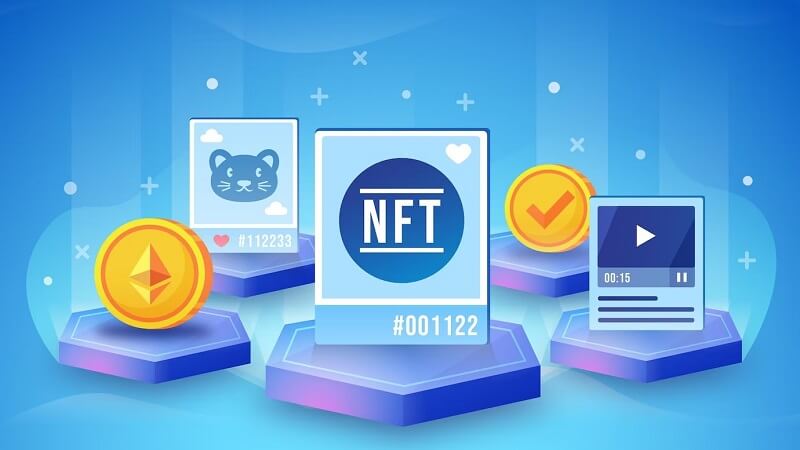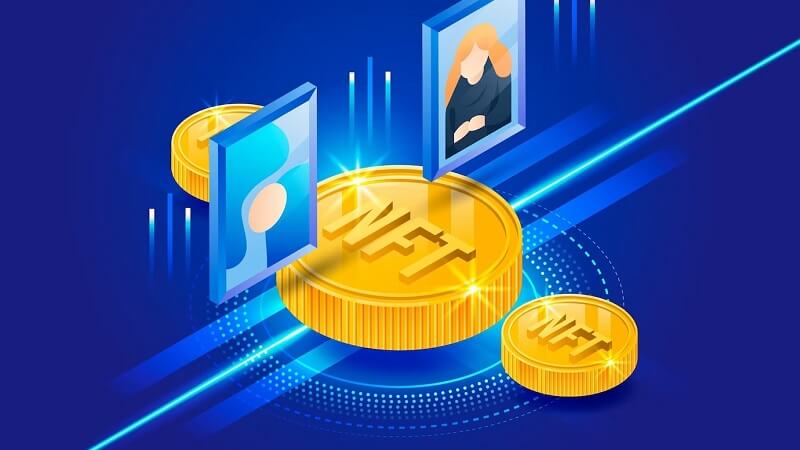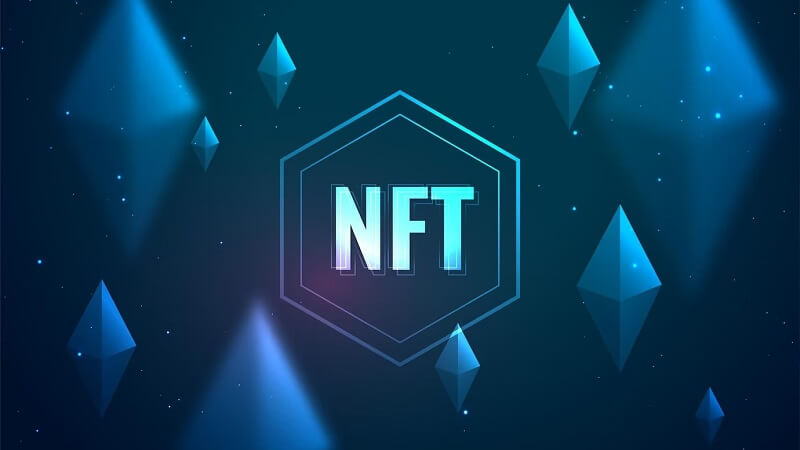To create an NFT marketplace can be an exciting venture in the ever-evolving world of digital assets.
Non-fungible tokens (NFTs) have gained considerable attention, providing a unique method for artists, creators, and collectors to buy, sell, and trade digital assets on a blockchain.
This article will guide you through the steps of setting up your own NFT marketplace.

Understanding NFTs and Their Marketplaces
Before you create an NFT marketplace, it’s crucial to have a solid understanding of what NFTs are and how they function.
NFTs are unique digital assets stored on a blockchain, most commonly the Ethereum network. They can represent anything digital, like art, music, in-game items, and more. NFTs cannot be replaced with something else, making them “non-fungible”.
NFT marketplaces are platforms where these digital assets can be bought, sold, and traded. Popular NFT marketplaces include OpenSea, Rarible, and NBA Top Shot. By creating your own marketplace, you can offer a platform for artists and collectors to interact directly.
Step 1: Conceptualize Your Marketplace
The first step towards realizing your goal to create an NFT marketplace is conceptualization.
This crucial stage involves understanding your audience, envisioning the marketplace’s functionalities, and setting the groundwork for your unique platform.
Let’s delve into the key aspects of this step.
Identify Your Niche
As with any business, to create an NFT marketplace, you first need to identify your niche. Are you catering to artists, musicians, game developers, or a combination? Defining your target audience will help shape your marketplace‘s design and features.
Determine the Features
You need to decide on the features of your marketplace. These might include auction types, royalty options, wallet connections, and more. Understanding your users’ needs is crucial at this stage.

Step 2: Choose Your Blockchain
Ethereum is the most popular blockchain for NFTs, but other options like Binance Smart Chain, Flow, and Tezos are available.
Each blockchain has its pros and cons in terms of cost, speed, and community support.
Step 3: Develop Your Marketplace
This is the most technical stage to create an NFT marketplace.
You can either hire a development team or use a white-label solution. The latter option is less time-consuming but can be restrictive in terms of customization.
Design the User Interface
The user interface should be intuitive and appealing. It should offer seamless navigation, clear listings, and a straightforward buying process.
A good UI can significantly impact user experience and, consequently, the success of your marketplace.
Implement Smart Contracts
Smart contracts are self-executing contracts with the terms of the agreement directly written into code. They enable the buying, selling, and trading of NFTs on your marketplace.
This is a critical step that requires expertise in blockchain programming.

Step 4: Test Your Marketplace
Before launching, ensure to conduct thorough testing of your marketplace. Check all functionalities, from account creation and NFT listing to bidding and purchasing. Also, test on different devices and browsers for compatibility.
Step 5: Launch and Market Your Marketplace
After all the technical work, it’s time to launch your marketplace. But creating the marketplace is just half the battle. You need to market it effectively to attract users. Leverage social media, influencers, PR, and more to get the word out about your NFT marketplace.
To create an NFT marketplace is a significant endeavor, but the potential rewards are vast. As the world continues to embrace digital assets, owning a platform where these unique tokens can be traded could place you at the forefront of this digital revolution.
For your marketplace to be successful it is essential that you have clear ideas about NFTs.
Follow these steps, and you could build a marketplace that becomes a thriving hub for creators and collectors alike.
Step 6: Monitor and Improve Your Marketplace
After you launch, it’s critical to keep an eye on how your marketplace is performing. Monitor user behavior, gather feedback, and make improvements as needed.
User Feedback
Users are the best source of information on what’s working and what’s not in your marketplace. Use surveys or direct communications to gather their feedback. This can help you refine and improve your platform over time.
Performance Metrics
Use analytics to monitor key performance metrics. These might include the number of active users, number of transactions, average transaction value, and more. These metrics can help you understand your marketplace’s health and identify areas for growth or improvement.

Step 7: Foster a Community
To create an NFT marketplace that truly thrives, you need to foster a strong community. Encourage interaction among users, host events, and regularly communicate updates and news.
Engage on Social Media
Social media is a powerful tool for building a community. Engage with your users on platforms like Twitter, Discord, and Instagram. Share updates, showcase featured NFTs, and start discussions.
Host Events
Hosting events, either online or in-person, can strengthen your community. These could be artist showcases, auctions, or educational sessions about NFTs and blockchain.
Step 8: Keep Up with Legal and Regulatory Changes
As the world of NFTs is still relatively new, legal and regulatory frameworks are evolving. It’s important to stay informed about any changes that could impact your marketplace. Consult with a legal advisor knowledgeable in blockchain and NFTs to ensure you’re in compliance.
To create an NFT marketplace requires careful planning, technical expertise, and a deep understanding of the NFT landscape. It’s not an easy task, but the potential rewards are enormous. By following this step-by-step guide, you can embark on this exciting journey with a clear roadmap to success. Remember, the key to a thriving marketplace lies not just in its technical aspects, but also in its community, user experience, and adaptability to change.

Future Trends and Considerations
While it’s crucial to focus on establishing and optimizing your NFT marketplace, it’s equally important to look ahead and consider future trends. As you create an NFT marketplace, keep an eye on evolving technologies, user trends, and new ways to enhance your platform.
Integration with Virtual and Augmented Reality
The combination of NFTs and virtual or augmented reality technologies could unlock exciting possibilities. From virtual galleries to AR-enabled NFT experiences, these technologies could enhance how users interact with NFTs on your marketplace.
Fractional Ownership of NFTs
Fractional ownership allows multiple people to own a portion of a high-value NFT. This trend could open up opportunities for more users to participate in the NFT market, potentially driving more traffic and transactions on your platform.
Buying fractional NFTs, for example, can come in handy to buy the most expensive NFT art.
Cross-Chain Interoperability
While most NFTs are currently on the Ethereum network, the future might see more cross-chain interoperability. This could allow NFTs from different blockchains to be traded on your marketplace, broadening your user base and offerings.
Conclusion
To create an NFT marketplace is an ambitious project with significant potential rewards. It’s a journey that requires not only technical acumen but also strategic planning, a strong understanding of your target audience, and a finger on the pulse of the rapidly evolving NFT landscape.
By following this guide, you’re well on your way to building a successful NFT marketplace. Remember, success in this realm doesn’t come overnight. It requires patience, constant learning, and the ability to adapt to the dynamic world of NFTs. Good luck on your journey to create an NFT marketplace, and may your platform become a thriving hub for the exciting world of digital assets.